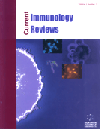-
s Vascular Endothelium and Vector Borne Pathogen Interactions
- Source: Current Immunology Reviews (Discontinued), Volume 8, Issue 3, Aug 2012, p. 227 - 247
-
- 01 Aug 2012
Abstract
The endothelium is the thin layer of cells that lines the lumen of blood and lymphatic vessels. Endothelial cells (ECs) from different locations have distinct and characteristic expression patterns that persist during in vitro culture. Although gene expression patterns in cultured cells clearly reveal the molecular heterogeneity of these ECs, their corelation with their in vivo counterparts remains to be defined. Situated at the interface between blood and tissues, the endothelium plays a central role for critical functions and represents a physical barrier for both blood-borne pathogens and immune cells, which must cross this barrier for trafficking between the bloodstream and tissues. Endothelial cells are target cells for several infectious agents, including Anaplasma, Bartonella, Orientia and Rickettsia. The lack of appropriate spontaneous or experimentally-induced animal models is a serious limitation for the study of pathogen-ECs interactions and is the major justification for the use of ECs cultures. Bartonella adherence to ECs is mediated by type-IV like pili and some outer membrane proteins. Some differences exist among Bartonella species adherence mechanisms. ECs are invaded either by an endocytic uptake or by engulfment of Bartonella. The activation of ECs by chronic inflammation and direct or indirect action of some Bartonella species leads to proliferation, angiogenesis and vasoproliferative tumor growth. Interactions between Anaplasma, Orientia, Rickettsia and ECs are less documented than Bartonella but differ significantly from the mechanisms described for Bartonella. At the least, they do not induce vasoproliferation. This review summarizes our understanding of the diversity of ECs, the vector borne bacterium-ECs interactions and the mechanisms of bacterial virulence and persistence.


